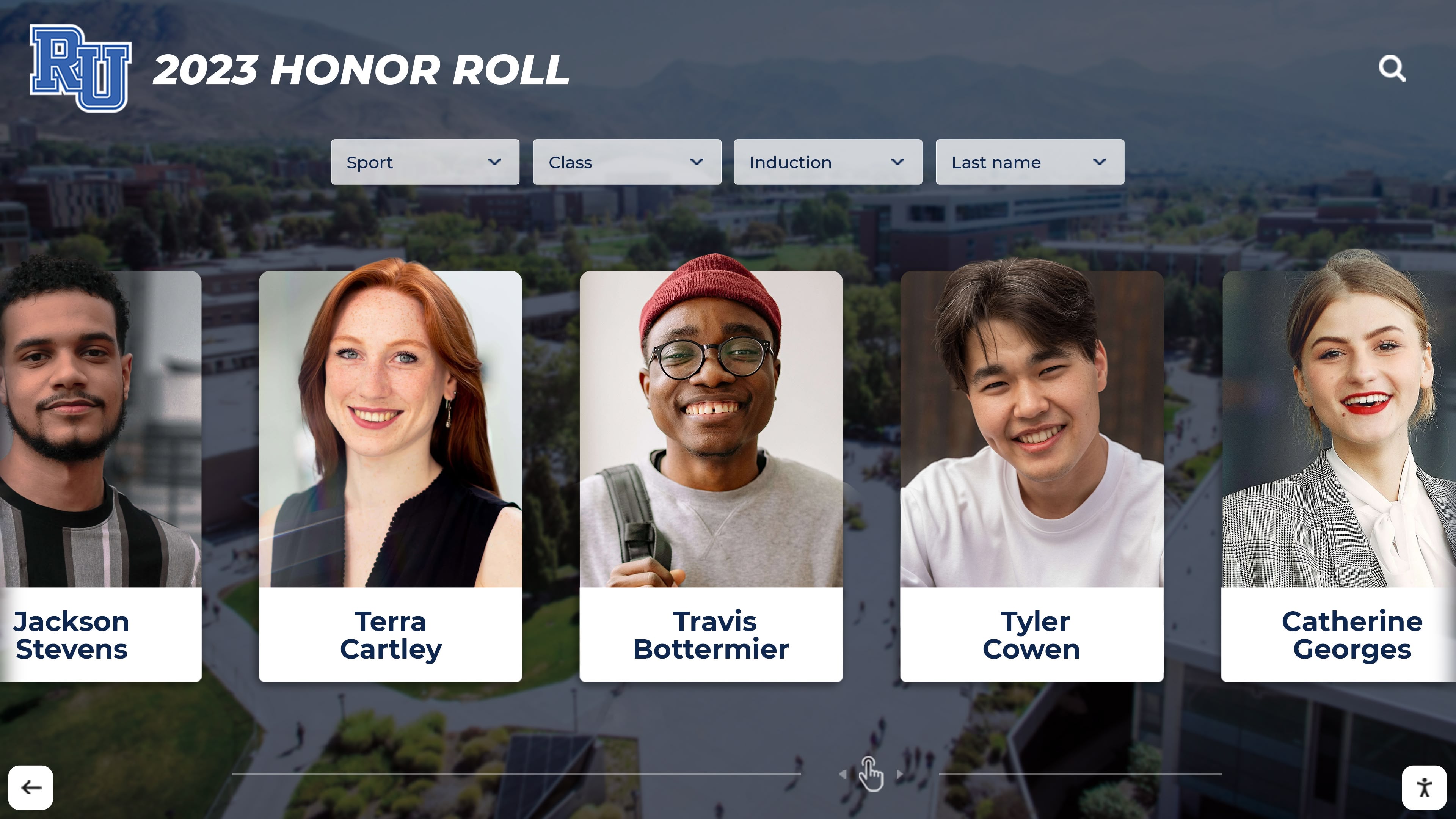Key Takeaways
Comprehensive guide to implementing effective academic recognition programs in schools. Learn best practices for honor roll, dean's list, and celebrating student academic achievement through modern digital displays.
Schools face a fundamental challenge: how to effectively recognize academic achievement in ways that genuinely motivate students, celebrate excellence, maintain fairness, and build cultures where learning is valued. Traditional approaches—paper certificates, brief announcements, static bulletin boards—often fall short of creating the meaningful recognition experiences contemporary students and families expect.
This comprehensive guide examines everything schools need to know about implementing effective academic recognition programs in 2025. From establishing honor roll criteria and dean’s list standards to implementing modern digital recognition displays, this resource provides practical frameworks schools can use to transform academic recognition from perfunctory obligation into powerful culture-building tool that inspires excellence across student communities.
Understanding Academic Recognition in Educational Settings
Before diving into implementation strategies, schools must understand what academic recognition programs actually are, why they matter, and how they contribute to broader educational missions.
Defining Academic Recognition Programs
Academic recognition programs systematically acknowledge and celebrate student achievement in scholarly pursuits. These programs take numerous forms across elementary schools, middle schools, high schools, and higher education institutions.
Common Academic Recognition Programs:
Honor Roll: Recognition for students achieving specific grade point average thresholds during marking periods or semesters. Honor roll programs typically establish minimum GPA requirements—commonly 3.0, 3.5, or 3.7—with some schools creating multiple honor roll tiers based on achievement levels.
Dean’s List: Primarily used in higher education but increasingly adopted by high schools, dean’s list recognition typically requires more stringent achievement than honor roll. According to research, undergraduate students commonly qualify for president’s honor roll with 4.0 GPA and dean’s list with 3.5-3.999 GPA.
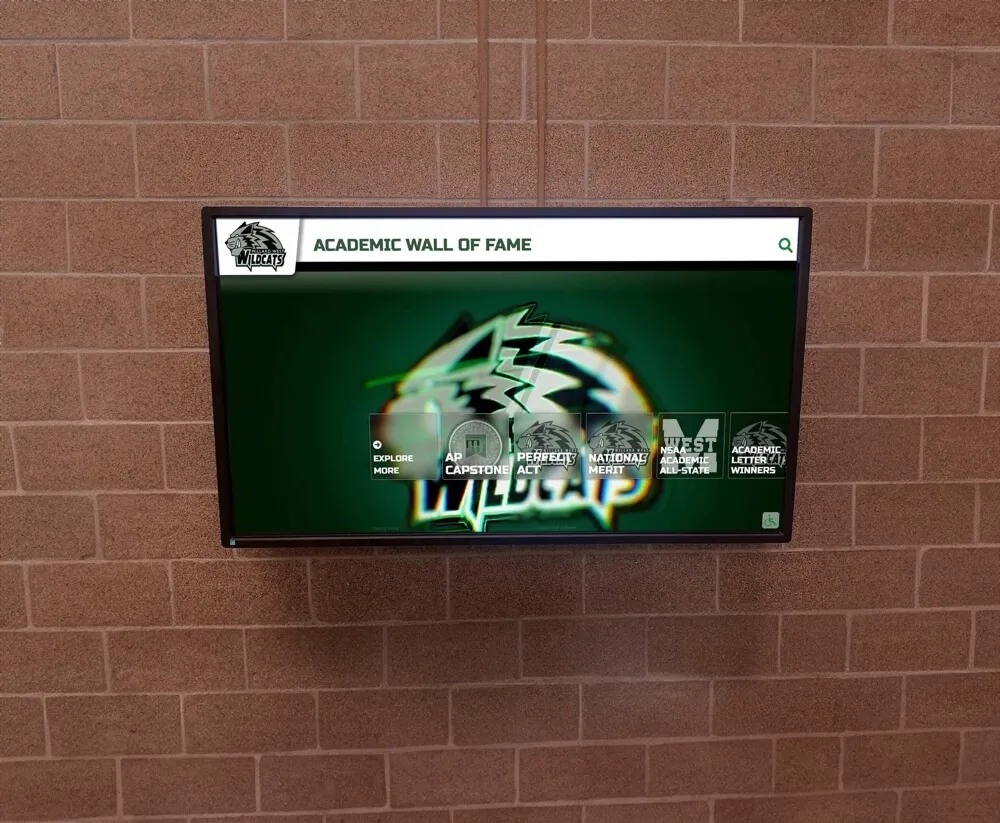
Academic Awards: Recognition for excellence in specific subjects, demonstrated through grades, standardized assessments, competitions, or teacher recommendations. Subject-specific awards validate achievement across diverse academic areas beyond just cumulative GPA.
National Recognition Programs: External programs like the College Board National Recognition Program, National Merit Scholarship recognition, or academic honor societies providing standardized acknowledgment of exceptional achievement. These programs carry particular weight for college applications and scholarships.
Improvement Recognition: Programs acknowledging significant academic progress even when absolute achievement levels remain moderate. Improvement recognition proves especially meaningful for students overcoming learning challenges or rebuilding after setbacks.
The Educational Psychology of Academic Recognition
Why do academic recognition programs matter beyond simply acknowledging achievement? Educational psychology research reveals multiple mechanisms through which recognition influences student motivation, behavior, and academic identity development.
Goal-Setting and Achievement Motivation: Recognition creates visible targets students can pursue. When schools clearly communicate honor roll requirements or subject award criteria, students develop specific goals beyond vague aspirations to “do well.” Research consistently demonstrates that specific, achievable goals enhance motivation and performance more effectively than general intentions.
Behavior Reinforcement: Recognition programs systematically reinforce behaviors and achievements schools value. When academic effort receives consistent acknowledgment, students understand that scholarly achievement matters to their school communities. This reinforcement proves particularly powerful during early adolescence when students form academic identities and attitudes toward learning.
Academic Identity Development: Students who receive recognition for scholarly achievement may internalize identities as learners, scholars, or intellectually capable individuals. These internalized identities influence future academic choices, effort investment, and responses to challenge. Recognition contributes to whether students see themselves as “good at school” or not.
Social Recognition and Belonging: Being acknowledged for academic achievement communicates that schools notice students and value their efforts. This recognition strengthens emotional connections between students and institutions. Research links school belonging to improved outcomes across academic performance, attendance, behavior, and social-emotional wellbeing.
Designing Effective Honor Roll Programs
Honor roll represents the most common form of academic recognition in K-12 education, yet many schools implement programs that feel routine, predictable, or disconnected from genuine motivation. Effective honor roll programs require thoughtful design addressing several key decisions.
Establishing Appropriate Achievement Criteria
The most fundamental honor roll decision involves determining GPA thresholds qualifying students for recognition. These criteria significantly impact how many students receive recognition, whether recognition feels achievable yet meaningful, and whether programs motivate improvement or create discouragement.
Single vs. Multiple Honor Roll Tiers:
Single Tier Approach: Some schools establish one honor roll threshold—commonly 3.5 GPA—recognizing all students exceeding that standard equally. This approach emphasizes selectivity and prestige, making recognition particularly special for recipients. However, single-tier programs create limited recognition opportunities and may fail to acknowledge students making strong progress toward higher achievement levels.
Multiple Tier Approach: Many schools implement tiered recognition systems:
- First Honors or High Honor Roll: 3.7-4.0 GPA
- Second Honors or Honor Roll: 3.3-3.699 GPA
- Honorable Mention: 3.0-3.299 GPA
Multiple tiers create more recognition opportunities while maintaining meaningful distinctions. Students who narrowly miss top honors still receive acknowledgment rather than complete exclusion, which research suggests maintains motivation more effectively than all-or-nothing systems.
Weighted vs. Unweighted GPA Considerations:
Schools using weighted GPAs that award extra points for advanced, honors, or AP courses face additional decisions. Should honor roll criteria use weighted or unweighted GPAs? Weighted calculations reward students challenging themselves with rigorous coursework rather than selecting easier classes to maintain high grades. However, weighted systems may disadvantage students without access to advanced courses due to scheduling constraints or prerequisite requirements.
Consider dual approaches recognizing achievement using both weighted and unweighted calculations, ensuring students in various academic programs have realistic pathways to honor roll recognition.

Frequency and Marking Period Decisions
How often schools calculate and announce honor roll significantly impacts program effectiveness and workload.
Quarterly Recognition: Elementary and middle schools often calculate honor roll each marking period—typically quarterly. Frequent recognition provides regular feedback and multiple opportunities for students to experience acknowledgment throughout the year.
Semester Recognition: High schools commonly recognize honor roll each semester rather than quarterly. Semester-based recognition reduces workload while allowing students adequate time to demonstrate consistent achievement patterns rather than single marking period performance.
Annual Recognition: Some schools provide cumulative year-end honor roll recognition based on full-year GPA. Annual programs reward sustained excellence throughout entire school years but provide limited interim feedback and delayed recognition.
Most schools find that quarter or semester recognition balances workload with meaningful frequency, providing multiple recognition opportunities annually while not overwhelming students or staff with excessive calculation cycles.
Handling Special Circumstances and Edge Cases
Effective honor roll programs establish clear policies addressing common scenarios that inevitably arise:
Incomplete Grades or Withdrawals: How do incomplete grades affect honor roll eligibility? Schools should establish whether students with incompletes remain eligible for recognition or become ineligible pending grade completion.
Transfer Students and New Enrollees: When do newly enrolled students become eligible for honor roll? Requiring full marking period enrollment prevents gaming the system while ensuring sufficient assessment data exists for meaningful evaluation.
Special Education and Accommodations: How do modified curricula or alternative grading systems interact with honor roll criteria? Schools must ensure recognition programs remain accessible to students with disabilities while maintaining meaningful standards. Consider separate recognition categories or alternative criteria honoring achievement relative to individualized education plan goals.
Grade Rounding Policies: If honor roll threshold is 3.5, does 3.49 qualify or not? Establish transparent rounding policies (typically to two decimal places) preventing perceived arbitrariness or inconsistency in borderline cases.
Document policies clearly in student handbooks ensuring families and students understand qualification requirements and special circumstances from the outset rather than learning policies reactively when questions arise.
Implementing Dean’s List and Advanced Recognition
While honor roll programs acknowledge solid academic performance, dean’s list and advanced recognition categories celebrate exceptional excellence requiring consideration of different implementation approaches.
Dean’s List Criteria and Standards
Dean’s list recognition typically requires more stringent achievement than standard honor roll programs. The distinction between honor roll and dean’s list communicates institutional recognition of truly exceptional scholarly achievement.
Typical Dean’s List Thresholds:
- President’s List: 4.0 GPA (perfect grades)
- Dean’s List: 3.7-3.99 GPA
- Honor Roll: 3.3-3.699 GPA
These tiered thresholds create meaningful distinctions between very good performance and exceptional achievement. Students understand that reaching dean’s list requires sustained excellence across all coursework rather than simply avoiding poor grades.
Credit Load Requirements: Many collegiate dean’s list programs require minimum credit loads—commonly 12-15 credits per semester—preventing students from achieving high GPAs through extremely light course loads. High schools implementing dean’s list recognition should establish similar minimum course load requirements ensuring recognition honors substantive achievement.
Quality Points Systems: Some schools use quality point calculations that consider both grades and course difficulty. Advanced courses earn additional quality points compared to standard-level classes. Quality point systems reward students challenging themselves academically rather than selecting easier pathways to maintain perfect GPAs.
Subject-Specific Academic Excellence Recognition
Beyond cumulative GPA-based programs, subject-specific recognition validates achievement in particular disciplines while celebrating diverse forms of academic excellence.
Departmental Excellence Awards: Recognition for top achievement in specific subjects—English, mathematics, science, world languages, social studies, fine arts. Department awards acknowledge students who may not achieve highest overall GPAs but demonstrate exceptional capability in particular areas.
Competitive Academic Recognition: Achievement in academic competitions provides objective evidence of excellence. Schools can recognize students earning distinction in:
- Mathematics competitions (AMC, MATHCOUNTS)
- Science fairs and research competitions
- Writing contests and literary publications
- History day competitions
- Language proficiency assessments
- Debate and forensics tournaments
Competition-based recognition validates achievement through external assessment rather than internal grading standards, providing credible evidence of capability.

Advanced Placement and College-Level Achievement: Schools should recognize students successfully completing AP examinations, dual enrollment courses, or early college programs. These accomplishments demonstrate willingness to challenge themselves with college-level material while potentially earning college credit.
National Recognition Programs and External Honors
External recognition programs provide standardized acknowledgment of exceptional achievement carrying particular weight for college applications and scholarship opportunities.
College Board National Recognition Programs: As of 2025, the College Board offers academic honors to high-performing students, with all students of all backgrounds from schools nationwide eligible to claim awards based on achievement on AP Exams and PSAT-related assessments. The program includes School Recognition Award (honoring top-performing students in high schools nationwide), First-Generation Recognition Award (for students on track to be first in families to complete college), and Rural and Small-Town Recognition Award (elevating students from smaller communities).
National Merit Scholarship Program: Recognition for exceptional PSAT performance provides prestigious acknowledgment. Schools should celebrate students qualifying as National Merit Semifinalists, Finalists, or Scholarship recipients, even when these external programs handle primary recognition.
Academic Honor Societies: National Honor Society, National Junior Honor Society, and subject-specific honor societies (Mu Alpha Theta for mathematics, National English Honor Society, etc.) provide recognition of sustained academic excellence combined with character, leadership, and service. Schools should acknowledge students inducted into these selective organizations.
Celebrating external recognition demonstrates that schools value achievement regardless of who officially bestows honors while connecting students to prestigious national programs that enhance college applications.
Modern Recognition Delivery: Beyond Paper Certificates
Traditional academic recognition typically consisted of paper certificates, brief announcements, and names printed in newsletters. While these elements retain value, contemporary recognition should incorporate multiple touchpoints creating deeper impact and broader visibility.
Digital Recognition Displays and Interactive Technology
Interactive touchscreen displays transform academic recognition from transient acknowledgment into permanent, engaging documentation of scholarly achievement.
Advantages of Digital Academic Recognition:
Unlimited Recognition Capacity: Digital platforms eliminate space constraints entirely. A single display can showcase every honor roll student, dean’s list recipient, and award winner across multiple years—content requiring dozens of physical bulletin boards or display cases.
According to data, 63% of people report that digital signage catches their attention compared to 30% who notice traditional signs. This increased engagement means more students, families, and visitors actually notice and interact with recognition content.
Multimedia Rich Profiles: Digital systems enable detailed recognition far beyond simple names and GPAs:
- Professional student photographs
- Specific achievement descriptions
- Recognition histories across multiple years
- Subject-specific awards and honors
- Connection to broader achievement records
Searchable and Interactive: Unlike static displays visitors glance at while passing, interactive recognition displays invite active engagement. Students, families, and visitors can search by name, browse by year, filter by achievement type, and view detailed profiles with complete recognition histories.
Easy Updates and Management: Updating traditional recognition displays requires printing new certificates, mounting materials on bulletin boards, or physically replacing dated information. Digital recognition updates instantly through cloud-based content management that authorized staff can access from any device. After each marking period, schools can update honor roll recognition within minutes rather than hours of manual bulletin board updating.
Solutions like digital recognition displays designed for schools provide purpose-built platforms specifically for educational recognition, offering intuitive interfaces requiring no technical expertise while creating engaging user experiences that capture attention.
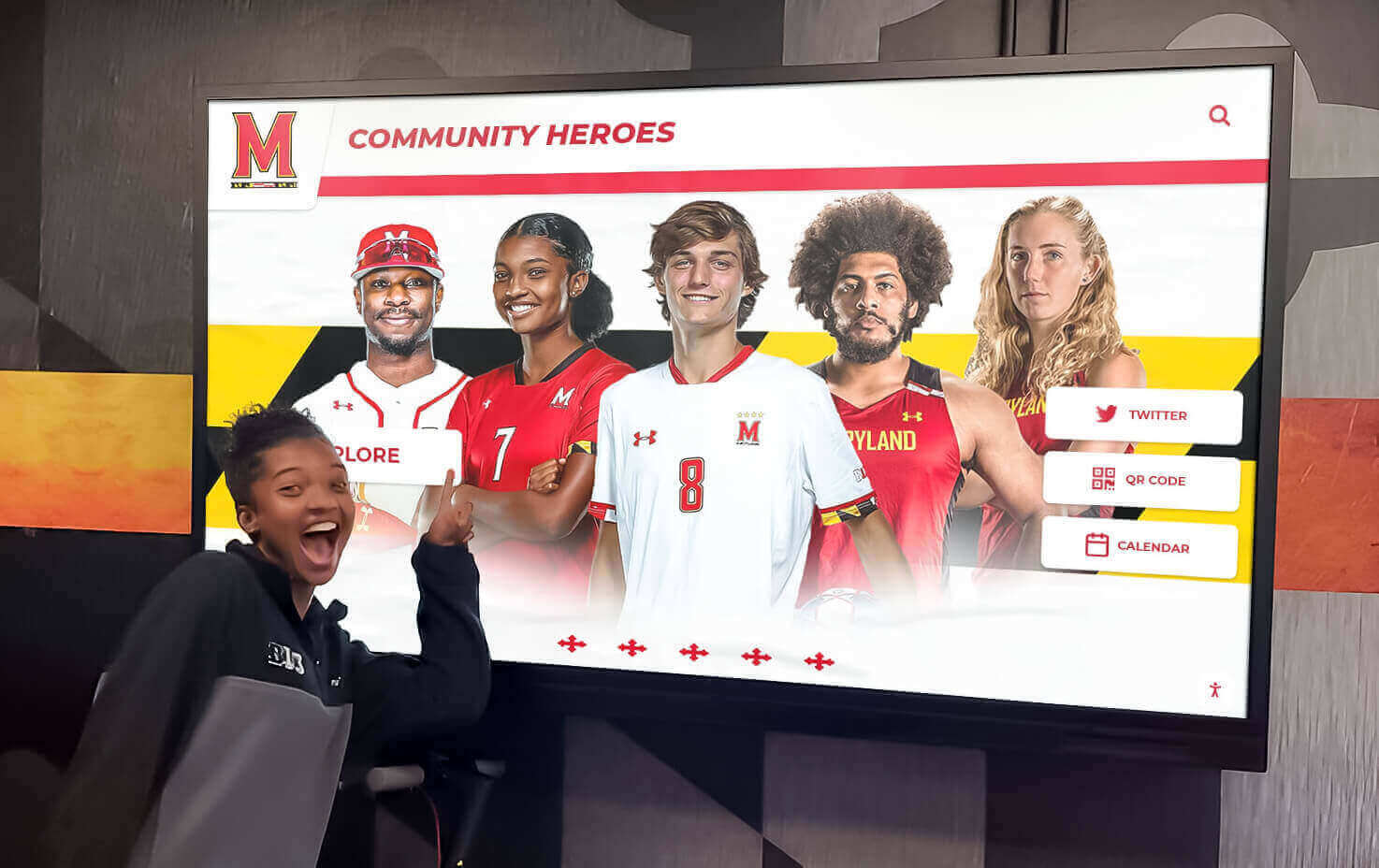
Comprehensive Online Recognition Platforms
Complement physical recognition with web-accessible content extending acknowledgment beyond those who can physically visit school buildings.
School Website Recognition Sections: Dedicate website pages to academic recognition featuring:
- Current marking period honor roll lists
- Dean’s list and highest honors recipients
- Searchable archives of previous recognition periods
- Explanation of program criteria and standards
- Photo galleries celebrating achievement
Virtual Access for Distance Engagement: Web-based recognition proves particularly valuable for:
- Alumni exploring their historical achievements
- Distant family members celebrating students
- Prospective families researching school culture
- Community members supporting educational excellence
Integration with School Communications: Link recognition content from email newsletters, announcement pages, social media, and other communication channels ensuring ongoing visibility rather than single announcement mention followed by obscurity.
Many schools implementing digital class composites and recognition systems find that online access significantly extends recognition impact beyond brief ceremony moments.
Social Media Recognition Strategies
Strategic social media use amplifies academic recognition beyond campus while creating shareable content engaging broader communities.
Individual Recognition Posts: Create dedicated posts celebrating honor roll students, dean’s list recipients, or award winners with photos and achievement descriptions. Individual posts give each honoree dedicated visibility and shareable content for their families.
Grade Level or Group Recognition: For schools with large numbers of honor roll students, consider grade-level group posts acknowledging collective achievement rather than attempting individual posts for hundreds of students.
Video Recognition Content: Short video compilations featuring photos and student testimonials create engaging content that performs well on social platforms while honoring students meaningfully.
Privacy and Permission Considerations: Always obtain appropriate permissions before featuring students on public social media. Follow district policies regarding student privacy, photo releases, and personally identifiable information. When uncertain, use first names only or request explicit family permission for fuller identification.
Building Fair and Inclusive Recognition Systems
Academic recognition programs face constant tension between maintaining meaningful standards and ensuring accessibility to diverse student populations. Effective programs carefully balance selectivity with inclusivity.
Addressing Achievement Gaps and Equity Concerns
Academic recognition systems can inadvertently reinforce existing achievement gaps if certain student populations consistently receive acknowledgment while others remain systematically excluded.
Monitoring Recognition Patterns: Track recognition distribution across:
- Demographic groups
- English language learner status
- Special education services
- Socioeconomic indicators
- Academic program tracks
When data reveals that certain groups consistently achieve recognition at dramatically different rates, investigate causes and consider program modifications ensuring all students have realistic pathways to experience being celebrated.
Multiple Recognition Categories: Single recognition type based exclusively on GPA may systematically favor students in certain programs or with particular advantages. Creating diverse recognition categories—academic achievement, academic improvement, subject-specific excellence, effort and perseverance—validates different forms of success and creates multiple pathways for students to experience acknowledgment.
Context-Appropriate Recognition: Consider recognition approaches honoring achievement relative to starting points rather than only absolute performance levels. Students making extraordinary progress from initial skill levels deserve acknowledgment even when current achievement remains moderate by comparison to peers starting with greater advantages.
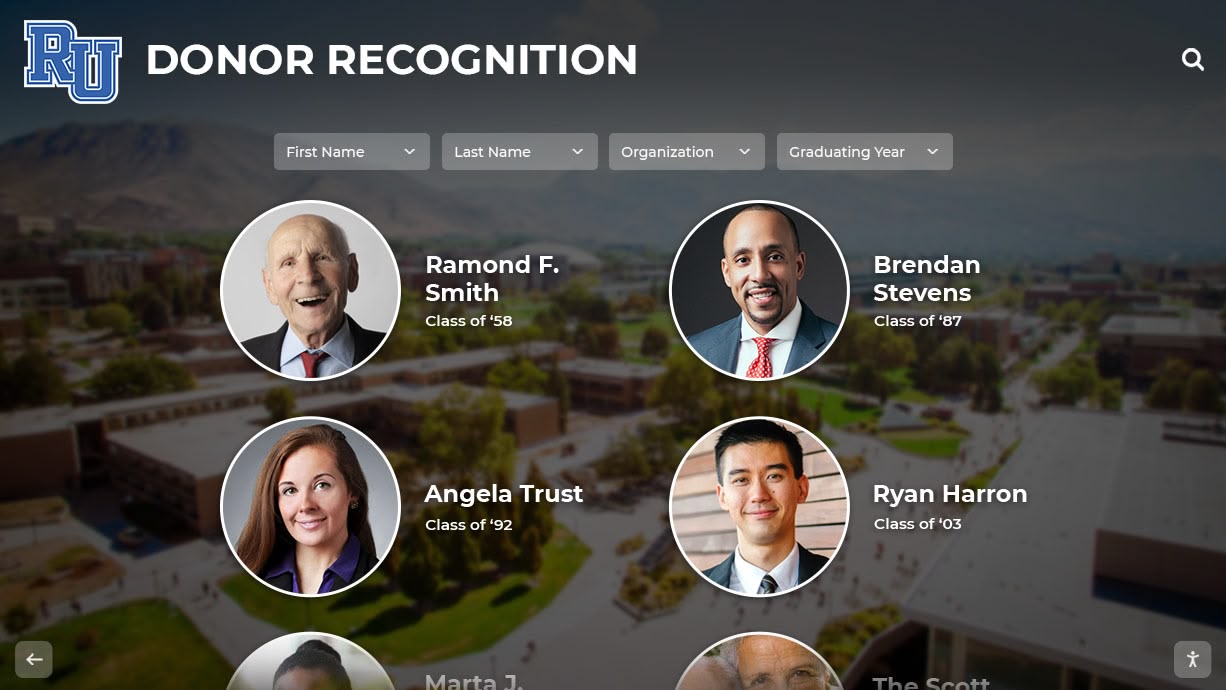
Recognition for Non-Traditional Students and Learning Differences
Students in special education programs, English language learners, and those with significant learning differences require thoughtful recognition approaches ensuring they experience acknowledgment appropriate to their circumstances.
Modified Curricula Considerations: Students receiving modified curricula or alternative assessment may not fit traditional GPA-based honor roll structures. Schools should establish parallel recognition categories honoring achievement relative to individualized education plan goals or English language development standards.
Effort and Progress Recognition: For students facing significant learning challenges, recognition categories emphasizing effort, persistence, and growth validate qualities essential for long-term success even when absolute achievement levels remain moderate.
Avoiding Segregated Recognition: While adapted recognition criteria prove necessary, avoid creating entirely separate “special education honor roll” or similar designations that feel segregating rather than inclusive. Integrate recognition for all students within unified programs while applying appropriate criteria for different circumstances.
Grade Inflation Concerns and Maintaining Standards
As schools seek to recognize more students, they face pressure to lower standards making honor roll more accessible. However, reducing rigor can undermine program credibility and meaning.
Transparent Criteria Communication: Clearly publicize honor roll thresholds, dean’s list standards, and award criteria so expectations remain transparent and consistent. Resist pressure to adjust published standards after the fact to include additional students.
Periodic Standards Review: While maintaining consistency within school years, periodically review whether recognition criteria remain appropriately calibrated. Standards set decades ago may need adjustment based on evolving grading practices, curriculum changes, or assessment methods.
Tiered Recognition for Wider Inclusion: Rather than lowering honor roll thresholds, consider adding additional recognition tiers (honorable mention, commendation, etc.) that acknowledge solid performance while preserving prestige for higher achievement levels.
Focus on Growth Metrics: Supplement absolute achievement recognition with improvement-based categories that motivate progress without requiring standards erosion.
Celebration and Communication Best Practices
How schools communicate and celebrate academic recognition determines whether programs create genuine motivational impact or feel like perfunctory obligations.
Recognition Ceremonies and Presentations
Ceremonial presentation creates memorable experiences elevating acknowledgment beyond simple name lists.
Formal Recognition Ceremonies: Schools implement academic recognition ceremonies at various scales:
School-Wide Assemblies: Dedicated ceremonies specifically for academic recognition create prestigious events where families attend, administrators present honors, and students receive sustained celebration. Formal assemblies require significant time and planning but maximize impact and visibility.
Grade-Level or Department Ceremonies: Smaller-scale recognition events within grade levels or academic departments create more intimate celebrations while reducing logistical complexity compared to school-wide assemblies.
Classroom Presentations: For elementary schools or specific circumstances, consider classroom-level presentations where principals or coordinators visit classrooms to present recognition in front of peers. Classroom presentations feel personal while requiring less coordination than large ceremonies.
Integration into Existing Events: Alternatively, integrate academic recognition into existing assemblies, parent-teacher conference nights, board meetings, or other gatherings. This approach requires less dedicated time while still providing meaningful public acknowledgment.
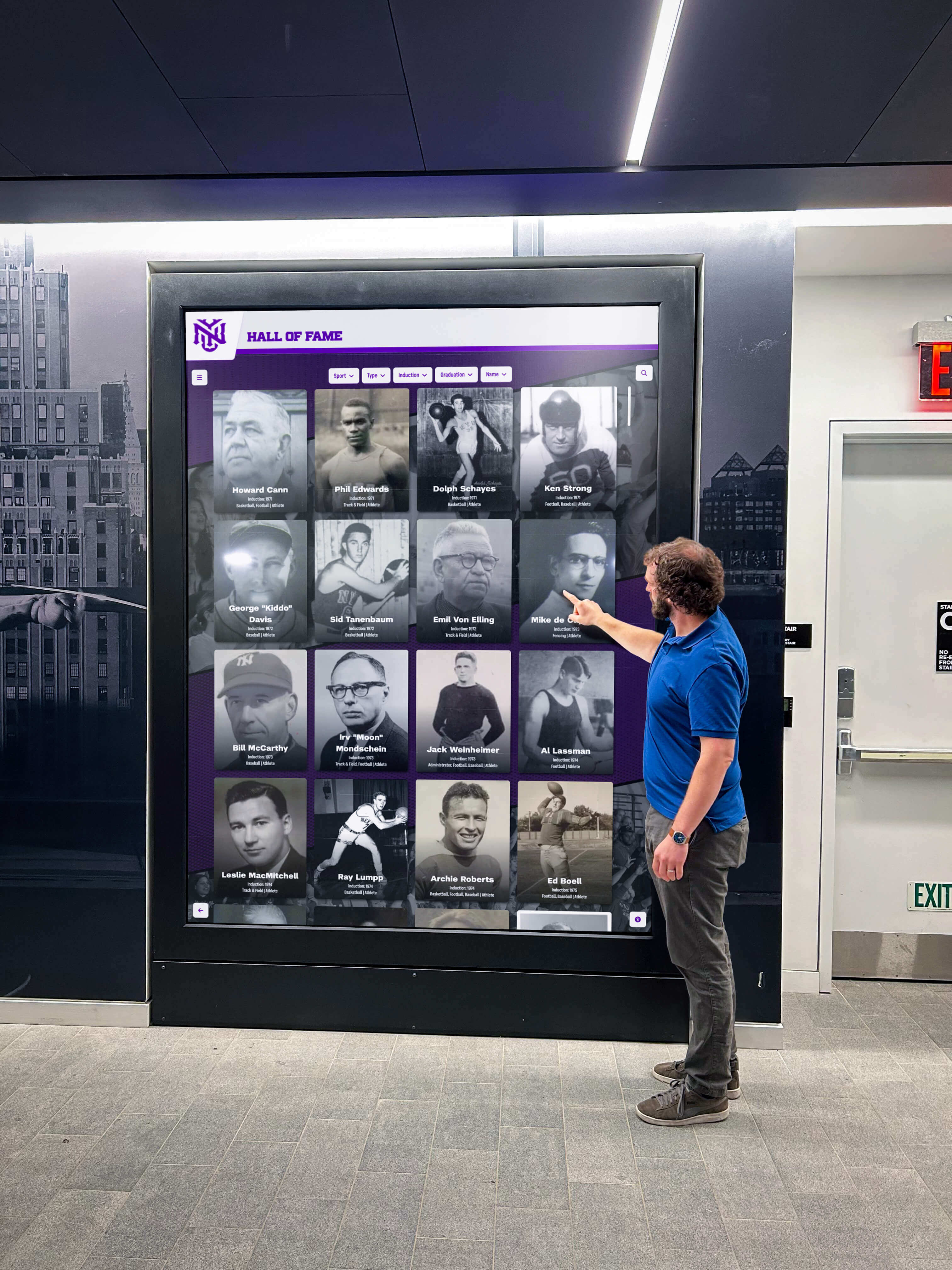
Family Engagement and Communication
Recognition impact amplifies when families participate in celebration and receive direct communication about student achievements.
Direct Family Notification: Contact families immediately when students earn academic recognition:
- Personal phone calls from principals, teachers, or counselors creating memorable moments
- Formal letters home describing specific achievements and recognition details
- Email notifications with links to digital recognition content or ceremony information
- Text messages through school communication systems providing immediate alerts
Family Participation Opportunities: Create opportunities for families to engage:
- Invitations to attend recognition ceremonies or presentations
- Encouragement to view physical or digital recognition displays
- Facilitation of family photos with students at displays or ceremonies
- Virtual participation options for families unable to attend in person
Shareable Recognition Content: Help families extend celebration beyond school:
- Digital certificates or graphics families can share on social media
- Professional photographs families can print or post online
- Recognition videos featuring honorees that families can share
- Social media features (with appropriate permissions) where families can engage through reactions and comments
Sustaining Recognition Impact Beyond Initial Announcement
Academic recognition should create lasting visibility rather than brief acknowledgment followed by obscurity.
Permanent Recognition Documentation: Digital platforms automatically create searchable historical archives documenting all academic honor recipients. These archives preserve institutional history while allowing alumni to find their own recognition years or decades later. Schools implementing comprehensive student achievement displays and tracking systems maintain permanent documentation that reinforces ongoing culture of excellence.
Integration with Other Recognition Programs: Connect academic recognition with broader student achievement systems. Honor roll students may also receive recognition in athletic contexts, performing arts programs, or service learning initiatives. Integrated systems demonstrate that schools value well-rounded excellence across multiple dimensions.
Alumni Connections: Maintain accessible archives allowing alumni to find their historical academic recognition when visiting campuses, attending reunions, or simply reminiscing online. These connections reinforce lasting bonds between alumni and schools while demonstrating institutional commitment to honoring achievement across generations.
Implementation Planning for Academic Recognition Programs
Schools ready to launch or significantly improve academic recognition programs should follow systematic planning ensuring successful implementation.
Establishing Program Infrastructure
Committee Formation: Assemble diverse planning committee including:
- School administrators providing institutional leadership
- Teachers from various departments representing different perspectives
- Counselors understanding student needs and achievement patterns
- IT coordinators supporting technology implementation
- Family representatives ensuring parent perspective
Criteria Development: Establish clear, transparent criteria for all recognition categories:
- Honor roll GPA thresholds and calculation methods
- Dean’s list standards and credit load requirements
- Subject-specific award criteria and nomination processes
- Improvement recognition benchmarks
- Handling of special circumstances and edge cases
Technology Selection: Evaluate recognition delivery platforms including:
- Digital display systems for physical recognition
- Content management platforms for easy updates
- Website integration for online recognition access
- Communication tools for family notification
- Archive and search capabilities for historical documentation
Solutions like touchscreen kiosk software designed for schools provide comprehensive platforms managing recognition from data collection through public celebration.
Ongoing Operations and Continuous Improvement
Marking Period Recognition Cycle:
Week 1: Marking period ends and grade submission Week 2: Calculate honor roll and academic recognition based on finalized grades Week 3: Generate recognition materials and communicate with families Week 4: Conduct recognition ceremony or presentation and update public displays
Annual Program Assessment: Conduct comprehensive review annually:
- Analyze recognition distribution across demographics and programs
- Review engagement metrics understanding what resonates with stakeholders
- Collect systematic feedback from students, families, and staff
- Assess alignment between stated goals and actual outcomes
- Make strategic improvements for following year
Iterative Refinement: Make evidence-based improvements:
- Adjust criteria based on experience with appropriateness and effectiveness
- Add or modify recognition categories addressing identified gaps
- Refine celebration formats increasing engagement
- Enhance technology and displays maintaining currency
- Improve communication reaching families and community more effectively
Conclusion: Building Cultures of Academic Excellence
Academic recognition programs represent far more than lists of honor roll students and certificates acknowledging achievement. When implemented thoughtfully, these programs create systematic, visible recognition systems that validate scholarly excellence, communicate institutional values about learning, motivate students toward higher achievement, build school cultures where academic success is celebrated, strengthen school-family partnerships, and establish traditions honoring intellectual accomplishment across generations.
Effective programs share common characteristics:
- Clear, fair criteria consistently applied across all students
- Multiple recognition categories celebrating various forms of academic success
- Meaningful presentation formats making recognition feel genuinely special
- Modern technology enhancing visibility and accessibility
- Family engagement amplifying recognition impact
- Continuous improvement based on assessment and feedback
- Sustainable implementation persisting across leadership changes
The investment schools make in academic recognition programs pays dividends in student motivation, school culture, family engagement, and community pride. Recognition communicates that schools notice students, value their efforts, celebrate their accomplishments, and believe in their potential. During formative school years when students develop academic identities and relationships with learning, consistent recognition helps shape positive trajectories that extend far beyond school buildings.
Modern solutions like Rocket Alumni Solutions provide comprehensive platforms designed specifically for educational recognition, offering intuitive content management, engaging interactive displays, and proven approaches that help schools build the recognition cultures their students deserve. Whether implementing honor roll digital displays, comprehensive achievement tracking systems, or integrated recognition networks, digital technology enables schools to celebrate academic excellence more comprehensively and effectively than ever before.
Ready to transform how your school celebrates academic achievement? Explore comprehensive recognition solutions that honor student excellence while building school cultures where learning is genuinely valued and scholarly accomplishment receives the celebration it deserves. Your students achieve remarkable things every day—effective academic recognition programs ensure those achievements receive acknowledgment that inspires continued excellence and builds school communities where all students can thrive.
